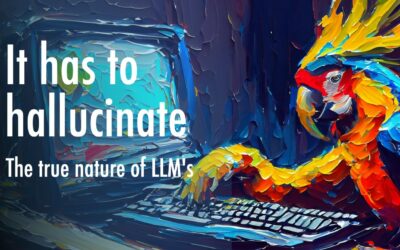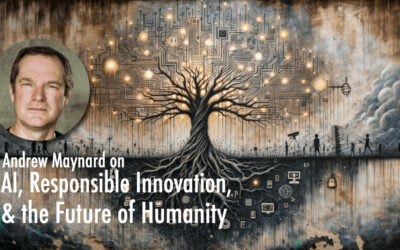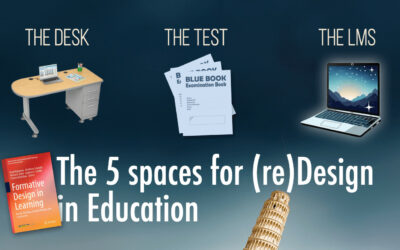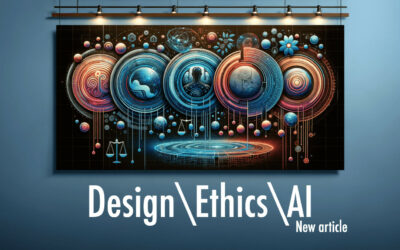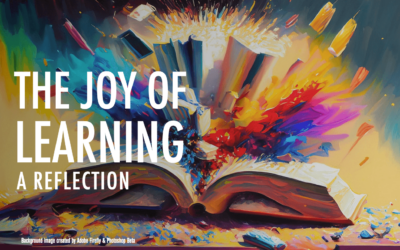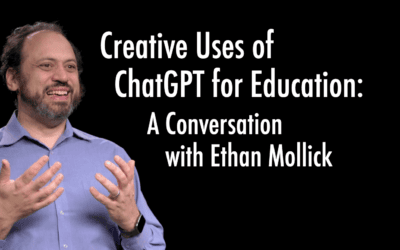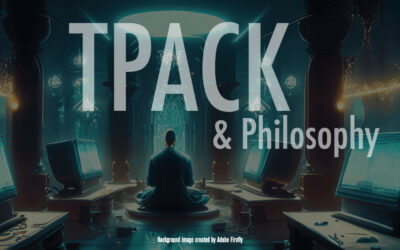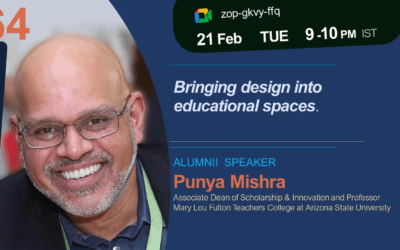Note: The shared blogging experiment with Melissa Warr and Nicole Oster continues. This time we delve into metaphors of the mind, technology and generative AI. The core idea and first draft came from Melissa, to which I contributed a substantial rewrite. The final...
Who speaks for the university? Social fiction as a lens for reimagining higher education futures
Note: Image above created using Adobe Firefly, Photoshop and composed in Keynote. A few years ago, I had the pleasure of connecting with author Dr. Phoebe Wagner through the Center for Science and the Imagination at Arizona State University. We discussed her...
The (Neil) Postman Always Rings Twice: 5 Questions on AI and Education
Note: This post has also been cross-posted on the Civics of Technology blog. Marie Heath (with whom I recently co-wrote a blog post about GenAI in Teacher Education: A techno-skeptical perspective) and I were invited to write a chapter for an edited volume titled...
Creative dialogue with Generative AI: Exploring the Possible with Ron Beghetto
As part of our ongoing series for the journal TechTrends exploring the intersections of technology, education, and creativity, we have recently turned our focus to the potential impacts of generative AI (GenAI) on these domains. Our latest article features a...
Generative AI in Education: Keynote at UofM-Flint
A couple of weeks ago I was invited to give a keynote at the Frances Willson Thompson Critical Issues Conference on Generative AI in Education. It was great to go back to Michigan even if for a super short trip. One of the pleasures of the visit was catching up with...
Generative AI: Will history repeat or (just) rhyme
As generative AI continues to reshape our world, we're faced with a crucial question: Will we repeat the mistakes we made with previous technologies or will this time be something different? George Santayana famously warned, "Those who cannot remember the past are...
GenAI in Teacher Education: A Technoskeptical Perspective
Image created using Adobe Firefly & Adobe Photoshop, composed in Keynote by Punya Mishra By Marie K. Heath and Punya Mishra Hello! This is a cross-blog post between Punya Mishra’s blog, where he plays with ideas of learning, technology, design and creativity...
Generative AI, Teacher Knowledge and Educational Research: Bridging Short- and Long-Term Perspectives.
I am pleased to share our latest article in our ongoing column series for TechTrends on the topics of technology creativity and education. Over the past few months we have focused on generative AI, through conversations with thought leaders such as Chris Dede...
Media, Cognition & Society through History: A Mapping
If oral cultures prioritize memory and print cultures emphasize systematic organization, what types of knowledge will AI systems foster? Marie Heath and I wrote this line in a chapter that is currently in press. But the idea underlying this quote has been with me for...
It HAS to hallucinate: The true nature of LLM’s
Though Generative AI is receiving a great deal of attention lately, I am not entirely sure that the discussions of these technologies and their impact on education and society at large genuinely engage with the true nature of these technologies. In fact I have argued...
Keynote Presentation: AI in Education Summit
Note: The image above is the result of a two-stage creative process—done in collaboration with AI. Dall-E was tasked, over multiple iterations, to craft a woodcut-style image, to abstractly capture the idea of AI and education, with dark and light motifs, aiming to...
Andrew Maynard on AI, Responsible Innovation & The Future of Humanity
Welcome once again to our ongoing column series where we delve into the intersection of technology, creativity, and education. Our conversations with authorities such as Chris Dede (Harvard), Ethan Mollick (Wharton), and Kyle Jensen (ASU) have centered around the...
The Desk, the Test, the LMS: The 5 Spaces for (re)Design in Education
What do a teacher's desk, the PISA test and Learning Management Systems (LMS) have in common. Apart from being educational technologies, they are also the heart of a book chapter that Melissa Warr, Kevin Close and I just published in a book titled Formative Design in...
Design\Ethics\AI
Technologies like remote proctoring software and advanced language models are no longer futuristic concepts. They're here, and they're reshaping how we learn and how we teach. But with these advancements come critical ethical considerations. The deployment of these...
The new convergence
I recently received an email from dean recommending this post titled Thoughts on Now and Then by Andrew Hickey. In this extended essay Hickey provides his thoughts on the new Beatles remake, Now and Then. The essay is a thoughtful and loving analysis of human...
You have been terminated: A case for humane design
Good design cares about details. Good design is humane. Bad design is neither. Designers must bring this attention to detail and humanity to every aspect of their work. And this applies even the invisible parts. This, caring for the "invisible" details, is captured in...
The joy of learning: A reflection
What is this thing called learning? What does it mean to learn something? What makes us want to learn? Why is it fun? Why do we want to know? Even as educators, we often don't take the time to ask ourselves these foundational questions. So it is rewarding when we get...
Creative uses of ChatGPT for Education: A conversation with Ethan Mollick
Ethan Mollick is a professor at the Wharton School of Business and studies and teaches innovation and entrepreneurship. He also leads Wharton Interactive, an effort to democratize education through games and simulations. He is also one of the most innovative users of...
6 Videos (on the 5 spaces for design in Education)
Learning Sparks is a new initiative at ASU that feature short, 5-minute, videos showcasing the expertise of a range of ASU faculty members. These videos are carefully crafted, with high-production values seeking to capture big ideas in bite-sized chunks. A few months...
TED talk: How to design a school for the future
My TED talk, titled How to design a school for the future just went live this morning. Sadly, I was traveling in India when the recordings were scheduled so I missed the whole "standing on the red-dot" looking like a thought leader who will give a talk that will...
TPACK & Philosophy
I often receive emails about the TPACK framework and even though I have not worked in that space for a while, I do feel obligated to respond. That said, I usually do not feel the need to document my responses. Once in a while, however, I get a question that demands a...
On designing aesthetic educational experiences in science
What is the role of beauty (and aesthetics) in science in science education? This is something that I have been interested in for a long time, going back to highschool. Over the years I have built a small body of scholarship around this topic. Sadly, this work does...
We Have Always Been Rhizomatic
Danah Henriksen and I were recently asked to write a foreword for a book titled New Directions in Rhizomatic Learning: From Poststructural Thinking to Nomadic Pedagogy edited by Myint Swe Khine. This was a fun foreword to write and allowed us to explore a range of...
Krishnamurti & Dewey in the Metaverse
I am writing a paper with Marina Basu about how John Dewey's and Jiddu Krishnamurti's philosophies of education and their implications for learning in increasingly mediated environments. While working on the paper, it struck me that it may be fun to see what Bing Chat...
Gilbert Daniels, the gardener who changed our world
Note: I wrote and submitted this piece as an op-ed to the Indianapolis Star to be published on April 14, 2023, exactly 3 years after they had published Gilbert Daniels' obituary. It would have helped set the record straight about his amazing contribution to the world...
Tools “R” Us: When objects become you
Danah Henriksen shared an article with me recently “When objects become extensions of you.” It is an interesting piece arguing that “Whether they are tools, toys, or mirror reflections, external objects temporarily become part of who we are all the time.” Essentially,...
A chat about GPT3 (and other forms of alien intelligence)
We recently celebrated the 10-year anniversary of writing a regular column series on Rethinking Technology & Creativity in Education for the journal TechTrends. Over the next few articles in this series, we are going to dive deeper into Artificial Intelligence...
Bringing Design to Education: IDC Talks
I was recently invited to speak at a series organized by alumni of the IDC School of Design, IIT Powai. As an alum of the same institution it was a great honor to be invited. You can see the entire series here (and I must say there are some awesome speakers there). My...
ChatGPT as a blurry jpeg of the web
Ted Chiang is one of the greatest, insightful writers working today. I had written previously about one his short stories in a post titled: Truth of fact and feeling: Unpacking McLuhan (2/3) about his short story The truth of fact and the truth of feeling. (If you...
Aesthetics and science education: Beauty at Work podcast
Beauty at Work is a podcast that "explores how beauty shapes our lives and the work that we do" hosted by Brandon Vaidyanathan, Associate Professor of Sociology at The Catholic University of America. In its first season the focus is on beauty in science. As part of...










